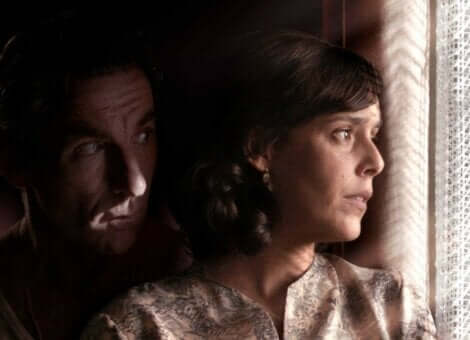The Infinite Trench is a disturbing journey through the Spanish Civil War and the so-called ‘moles’. After an amnesty from the government in 1969, men appeared all over Spain who had remained hidden, often at home, for more than 30 years to avoid reprisals. after the Franco occupation of the country in 1936.
The Infinite Trench collects details of some of the amazing stories of these nightmares. Does the film tell the hidden story of one of these?Moles? And his wife, who suffers from his terrible situation in a profound and selfless way. An excellent love story as protection against fear.
- The film achieves much of its impact through two characters and a place.
- By the team of Basque directors and producers responsible for films such as Loreak and Handia.
- Is an intense.
- Almost perfect emotional journey on the fear of political and human repression.
- Vulnerability.
- Despair and resistance.
Almost all physical action takes place in the first 20 minutes of the film. The camera follows the cunning left-wing politician Higinio (Antonio de la Torre), who is placed in a French Civil Guard truck with other prisoners.
While one of his companions calls one of the guards for his life, Higinio takes the opportunity to jump and escape the truck, chased by civilian guards as he traversed rural Andalusia.
Hiding in a deep, dark pit at night with two other fugitives, both men were shot from outside the well, at which point Higinius manages to hide in one of the well cavities, away from bloodied bodies, left the well the next morning and returned home.
His wife, seamstress Rosa (Belén Cuesta), is waiting for him, from this moment on, a deep psychological drama begins in the immobility and eternity of the hours, to which Higinio will see no other way out but to hide under the floor of his house and witness everything that happens there as a mole, a spectator in his own house looking at everything from the last row.
Although a mole’s life is theoretically boring, boredom is not a problem for those who watch this film.
The main threat and tension of the film comes from Gonzalo (Vicente Vergara), who betrayed Higinius to the authorities, who continues to threaten Higinius at any moment, starting with the sadist removing the curtains from Rosa’s house while watching everything from his hiding place. Site.
Disguised as an old woman, Higinio settles down with his stepfather, taking advantage of the passage of a Easter procession in the village. There, he will have a more conducive space to establish himself once and for all as a fugitive mole of justice. You will have a small bed, shelves and a small table where you can do some chores for Rosa.
Soon after, taking advantage of Rosa’s absence for a few months, a gay couple decides to use Higinio’s stepfather’s house for their romantic encounters, offering comic relief to the drama, and when discovered by Higinio, they agree to continue using the house as long as they bring newspapers and food.
Rosa decides she wants a child, an unexpected request under the circumstances. Rosa is a firm, pious and selfless woman; her role is complex, because she has several facets, being much more than the woman who helps Higinius hide.
Suddenly, in the face of the need for a change in the conceptions of her upbringing, Rosa has to reinvent he he hemselves as a family provider. Belén Cuesta expresses Rosa’s fragility, strength and dedication over the years.
If there is a turning point in Rosa’s life, it is the abuse she suffers from a civilian guard who hires her services as a seamstress. One day, the guard advances upon Rosa, who refuses any contact with him; Hyginius, who looks at everything from his hiding place, must avoid being discovered.
Higinio feels overwhelming frustration as the humiliations accumulate, however, after what happened, he reacts primitively, leaving his hiding place to sleep with his wife, in an awkward rayane scene in sexual abuse.
A few days later, the Civil Guard returns to the studio to assault Rosa and Higinio is unable to prevent her rape, as, at the same time, her lamp falls to the ground and threatens to burn her hiding place, when she finally leaves. to help his wife, he ends up killing the Civil Guard, opening up a question about who is really his son’s father.
The performances of the two protagonists bring the story back to reality, the fact that Higinio is a man of traditional values and few words brings an eye-catching look to the character.
Inevitably, most of the drama unfolds in the dark, which sometimes contrasts with the dazzling Andalusian sun, and much of this happens through Higinio’s uncertain and fearful point of view as he and the viewer try to discover what is happening: a cinematic strategy that generates tension, but also emotion.
Despite all the suffering, darkness and human evil that history portrays, it is an optimistic film that shows us, without sentimentality, without excesses or topics, that love can be a refuge that can stand firm throughout life.
The narrative development of the film begins with the simply visible and ends with the ideal to see, which, in essence, is all that is not seen.

